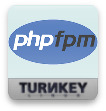
Overview
PHP with NGINX on Debian 10 (BYOL) from Zend by Perforce provides a turnkey solution for running PHP in the cloud. This supported PHP runtime includes the option to install any of PHP 7.2, 7.3, 7.4, 8.0, 8.1, 8.2, or 8.3, and can scale seamlessly across your cloud resources. ZendPHP gives PHP developers and DevOps engineers the tools needed to easily orchestrate clusters of PHP servers as microservices or autoscaling applications.
Highlights
- ZendPHP builds include community or back-ported patches against known CVEs for a minimum of two years beyond community support end of life.
- Purpose-built for cloud orchestration, ZendPHP images offer advanced tooling to help you streamline, automate, and accelerate continuous delivery cycles.
- ZendPHP builds include fully customizable Terraform templates, meaning easy orchestration for your PHP-based application clusters.
Details
Introducing multi-product solutions
You can now purchase comprehensive solutions tailored to use cases and industries.

Features and programs
Financing for AWS Marketplace purchases

Pricing
Vendor refund policy
n/a
How can we make this page better?

Legal
Vendor terms and conditions
Content disclaimer
Delivery details
64-bit (x86) Amazon Machine Image (AMI)
Amazon Machine Image (AMI)
An AMI is a virtual image that provides the information required to launch an instance. Amazon EC2 (Elastic Compute Cloud) instances are virtual servers on which you can run your applications and workloads, offering varying combinations of CPU, memory, storage, and networking resources. You can launch as many instances from as many different AMIs as you need.
Version release notes
- Updated PHP versions
- PHP 8.3.13
- PHP 8.2.25
- PHP 8.1.30
- PHP 8.0.30.3
- PHP 7.4.33.7
- PHP 7.3.33.12
- PHP 7.2.34.20
Additional details
Usage instructions
To access the instance, you will need to navigate to the EC2 console and open your launched instance. Once both health checks have passed, you will need to copy the public IP address in order to SSH into your newly launched instance. Ex SSH -i yourkeypair admin@ip_address
All ZendPHP cloud images set up a default virtual host located in the directory /var/www . Users can upload a PHP application to that directory and immediately have a running web application.
Additionally, ZendPHP cloud images come with several scripts to allow you to switch PHP versions and manage virtual hosts and SSL details. These are all located in /usr/local/bin and MUST be run as root or via the sudo command.
Zend provides the following scripts:
zendphp-vhost
zendphp-switch
For Bring-Your-Own-License images, obtain and install credentials directly from Zend by Perforce.
zendphp-vhost:
The zendphp-vhost script allows you to add, rename, or remove virtual hosts. The script also fetches and configures a TLS certificate for the vhost via the Let's Encrypt Certificate Authority (CA). If the query fails, the script uses the self-signed localhost certificate.
Use
zendphp-vhost (action) (vhost domain) (port) (options) (email)
Parameters
action: One of: info, add, remove, chgname, or chgport.
vhost domain: Domain for which to create, modify, or remove a virtual host.
port: If set, configures the virtual host to this port; otherwise sets the port to the default (80).
options: One of http or https. This option also configures the port for http or https. If set to https the script retrieves the certificate from Let's Encrypt.
email: Webmaster e-mail. If not set, the script uses the default webmaster@localhost. Note: If you use the default e-mail, certbot (the Let's Encrypt client) prompts you for a valid e-mail address to ensure renewal notifications can be sent.
Examples
Show currently enabled vhosts:
$ zendphp-vhost info
Create new vhost (use default parameters):
$ zendphp-vhost add somehost.somedomain.com
Create new vhost (preconfigures port 443 and fetch certificate from Let's Encrypt CA):
$ zendphp-vhost add somehost.somedomain.com 443 https webmaster@somedomain.com
Change vhost name (also requests a new TLS certificate from Let's Encrypt and revokes/deletes the old one):
$ zendphp-vhost chgname somehost.somedomain.com someotherhost.somedomain.com
Change vhost port to non-secure (non-ssl enabled) port:
$ zendphp-vhost chgport somehost.somedomain.com 81 http
Change vhost port to secure (ssl) port (also runs certbot command to configure certificate):
$ zendphp-vhost chgport somehost.somedomain.com 444 https
Remove virtual host (also asks whether to preserve or delete the document root directory as well as configuration files, and asks to revoke/delete the previously installed certificate):
$ zendphp-vhost remove somehost.somedomain.com -
zendphp-switch:
The zendphp-switch script allows you to switch between ZendPHP versions.
Use
zendphp-switch (action) (version) (vhost domain)
Parameters
action: One of: to, off.
version: PHP version (currently possible: 7.2, 7.3, 7.4, 8.0, 8.1, 8.2 or 8.3)
vhost domain: Virtual host you want to switch the PHP version on.
Examples
Switch from current ZendPHP version to 7.4:
$ zendphp-switch to 7.4 somehost.somedomain.com
Switch ZendPHP 7.4 FPM process off:
zendphp-switch off 7.4
For further information please see our documentation at https://help.zend.com/zendphp/current/content/home.htm
Resources
Vendor resources
Support
Vendor support
AWS infrastructure support
AWS Support is a one-on-one, fast-response support channel that is staffed 24x7x365 with experienced and technical support engineers. The service helps customers of all sizes and technical abilities to successfully utilize the products and features provided by Amazon Web Services.
Similar products




